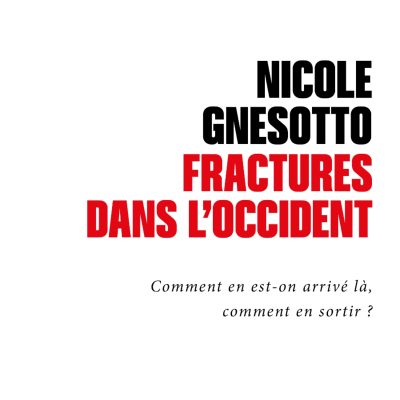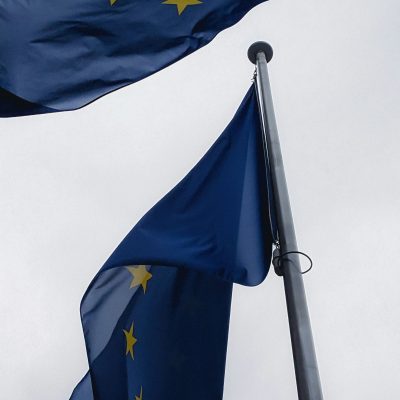[FR] European Elections: Quest For Unity In The Diversity Of Winners

New Power Dynamics to Consolidate
The Christian Democrats (EPP) and the Social Democrats (S&D) have lost their traditional dominance in the European Parliament. This shift originates primarily in Germany, given the country’s demographic weight and the previously predominant role these two political groups played there. With nearly 29% of the vote, the CDU/CSU still came in first but is losing ground. Holding 179 and 153 seats respectively, the two historically dominant European political families now have to contend with the rising forces of the centrists (105 seats) and the Greens (69 seats).
The narrowing gaps between these four political groups—along with their differing trajectories, with centrists and Greens on the rise and Social and Christian Democrats in decline (the latter having had 216 MEPs in the previous legislature)—means that no two groups can steer the institution alone, as had been expected (VERGER, C. et al. “European Parliament 2019: what Parliament? what Europe?”, Décryptage, Jacques Delors Institute, October 2018). This more fragmented scenario, in which no clear winner emerges, prevents the Spitzenkandidaten (lead candidates of the political groups) system from prevailing as it did in 2014, making the negotiations over top EU posts even more contentious and open-ended.
These new political power balances are not yet set in stone. They could still be reshaped by Brexit, whose timeline remains highly uncertain. If British MEPs leave the European Parliament, the EPP would gain proportionally relative to the Social Democrats and the centrists, who would lose Labour and Lib-Dem members, respectively. Conversely, a potential departure of Hungary’s Fidesz party—currently suspended from the EPP—would slightly reduce the weight of what remains the largest political family in Europe, while arguably making it more internally coherent.
In any case, this new configuration forces the four main groups to agree on shared priorities, likely formalized in a coalition-style agreement. Without such alignment, the potential influence that a combination of these political forces holds could go to waste.
A Green Momentum to Carry Forward
The new Parliament has seen a clear surge in support for the Greens, concentrated mainly in Western Europe (Germany, France, Austria, Finland, French-speaking Belgium, Ireland, Luxembourg, the Netherlands). Paradoxically, their only setback came in Sweden—home of Greta Thunberg, the climate strike figurehead who dominated much of the campaign’s narrative. In Germany, Die Grünen surged ahead of the Social Democrats.
This momentum was powered by a young electorate. In Germany, 34% of voters aged 18–24 chose Green candidates, compared to just 11% for the CDU and 8% for the SPD. In France, this age group also primarily supported the Greens, who had already performed strongly in the 2009 European elections.
The question now is how this political family will handle its significant seat gain, particularly whether it is willing to join a coalition with the three other pro-European groups, and under what conditions. Within the Parliament, the Greens are expected to form an effective and organized group, and thus wield real influence.
Their rise is fueled especially by climate concerns, one of the rare campaign issues that mobilized voters in the West (VERGER, C. et al. “Proposals of the main European political families on key campaign themes for the European elections”, Décryptage, Jacques Delors Institute, March 2019). Environmental concerns were not limited to the Greens, however—other parties also highlighted them. The ecological transition is therefore set to play a central role in shaping the agenda of the next European Commission.
The Greens’ rise should not overshadow the equally noteworthy but less publicized gains of the liberal centrists. Their group—set to be renamed—has been buoyed primarily by the success of LREM in France and the Lib-Dems in the UK, along with contributions from Denmark, the Benelux countries, Slovakia, the Czech Republic, and Romania.
Beyond party alignments, these liberal and green votes reflect new political expectations in Europe—expectations that the new legislature must heed.
A Nationalist Wave That Calls for Vigilance
The feared nationalist tidal wave did not materialize, despite some notable victories. In the UK, the Brexit Party led by Nigel Farage became the single largest party in the European Parliament, winning 29 seats. In Italy, Matteo Salvini’s party scored an important win with 34.33% of the vote, sending 28 MEPs—the largest far-right delegation. Elsewhere, results were more modest, such as the AfD in Germany. In France, although the National Rally again came in first (23.3%), it lost one seat compared to 2014.
In other parts of Europe, the elections marked defeats for several far-right formations. Jobbik collapsed in Hungary, and Ataka won just 1% in Bulgaria. The neo-Nazi Golden Dawn party fared poorly in Greece, as did Vox in Spain, EKRE in Estonia, Geert Wilders’ party in the Netherlands, and the Czech far-right SPD. Among sovereignists, Denmark’s People’s Party suffered a significant loss compared to 2014, while Sweden Democrats placed only third.
On the opposite end of the spectrum, the radical left also stagnated, with very weak results in France (LFI), Germany (Die Linke), and Spain (Podemos). In Italy, the unclassifiable Five Star Movement lost significant ground compared to its success in the previous year’s national elections.
Though the populist wave was contained relative to forecasts, and despite the fact that these parties did not campaign for EU exits, it would be premature to consider the populist tide in retreat. Geographically concentrated, it requires continued vigilance from EU institutions and a comprehensive response to the concerns it reflects.
A Citizen Turnout to Sustain
The clear winner of this European election was turnout. At over 50%, it was the highest in 25 years. Sudden, widespread, and unexpectedly large, this surge in participation raises questions. It was likely helped by the coincidence with various national elections (Italy, Spain, Romania…), but this alone cannot explain the sharp increase, also seen in countries like France, Germany, and Poland.
This participation goes beyond partisan mobilization or defending a particular side. It expresses expectations and critiques of the EU. Perhaps it even reflects a survival instinct. This surge occurred in a context that is both heavy and diffuse—with rising nationalism, assertive strongman regimes, and a broader shift toward a world perceived as more threatening—where the European level appears increasingly relevant.
The good news is that this increased civic engagement calls for initiatives to keep it alive throughout the parliamentary term. It strengthens the legitimacy of the European Parliament and issues a political challenge that must be met. As Enrico Letta, president of the Jacques Delors Institute, put it: “Voters have given Europe a chance.” It is now up to the newly elected representatives and European leaders to seize it—beyond their partisan divisions—to build a coalition in service of the European common good.




